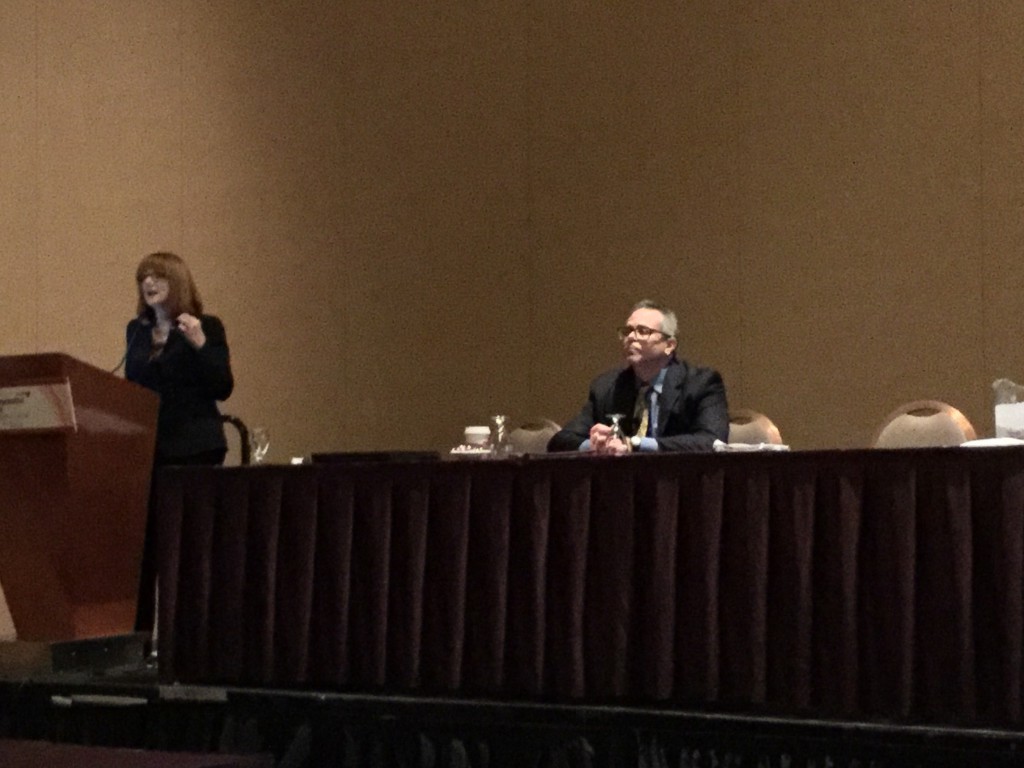Employer Claim Prevention, Early Intervention Protocols and Defense Strategies
At the 2015 National Workers’ Compensation & Disability Conference, Lee Blitstein, Partner, Altman, Lunche and Blitstein and Sharon Weissinger, Senior Occupational Health Manager, Hyatt Hotels discuss employer strategies, clinic strategies, insurance carriers, and judicial considerations for claim prevention, protocols and defense strategies.
Employer strategies:
- work to ensure employees feel comfortable reporting any incidents
- show compassion and concern for their safety and well being
- constantly educate managers and supervisors on proper accident investigations and reporting
- emphasize the open door policy and be visible around the work environment
- meet with employee as soon as possible
- discuss the right-to-work procedures work restrictions
- have nurse case manager visit your work site to assist with return-to-work placement
- ensure that the process for making clinic appointment is easy as possible
- ensure employees understands need for medical appointments
Employer tips:
- place investigation forms in one central area
- train employees to report incidents immediately
- ensure managers notify safety manager of any incidents
Sources of investigation and documentation:
- statements and observations of employee, supervisors and co-workers
- percipient witnesses’ impressions and statements under perjury
- electronic media, cell phone, video of premises, voice recordings and social media
- note, emails and statements
- personnel file including write ups, promotions, discipline, wage info and training
- index/injury search of past claims
- pre-litigation medical history with records
- accurate and descriptive history of mechanism of injury
- sustainability or persuasiveness of medical evidence
- failure to review and comment
Clinic strategies:
- develop a good relationship with your medical providers to prevent delays and possible liabilities
- visit your clinics regularly to ensure they are aware of your company’s protocols
- set up an electronic notification system for work-status report and missed appointments
- verify the “return-to-work” protocols are in writing and being used consistently
Insurance carriers:
- develop close communications with your workers’ comp carrier
- review service instructions and expectations with your claims adjuster
- have the ability to override the utilization review for medical tests referrals and physical therapy
- assign nurse case manager from your carrier to attend appointments
Judicial considerations:
- timeliness of evidence – when was it completed, initiated, completed and by whom?
- credibility of employee, employer, and witnesses – testimony, demeanor, memory and standing
- persuasiveness of evidence – contemporaneous medical from occupational nurse, clinic, private doctor and litigation expert
- burden of proof and substantiality of medical reports-factual and legal objections including inaccurate history, failure to comment on prior medical or non-medical discovery and failure to apply to correct law to the medicine
Prevention is key and critical on the front end, so hire safety committee staff with medical background. It is possible to prevent claims if you listen to the employee and thier needs. To help assist in prevention, build and develop new programs such as safety committees and monthly safety topic meeting. These committees should should contain a member from every area of the ornganization. The safety topic meetings should be constant reminders for prevention.


